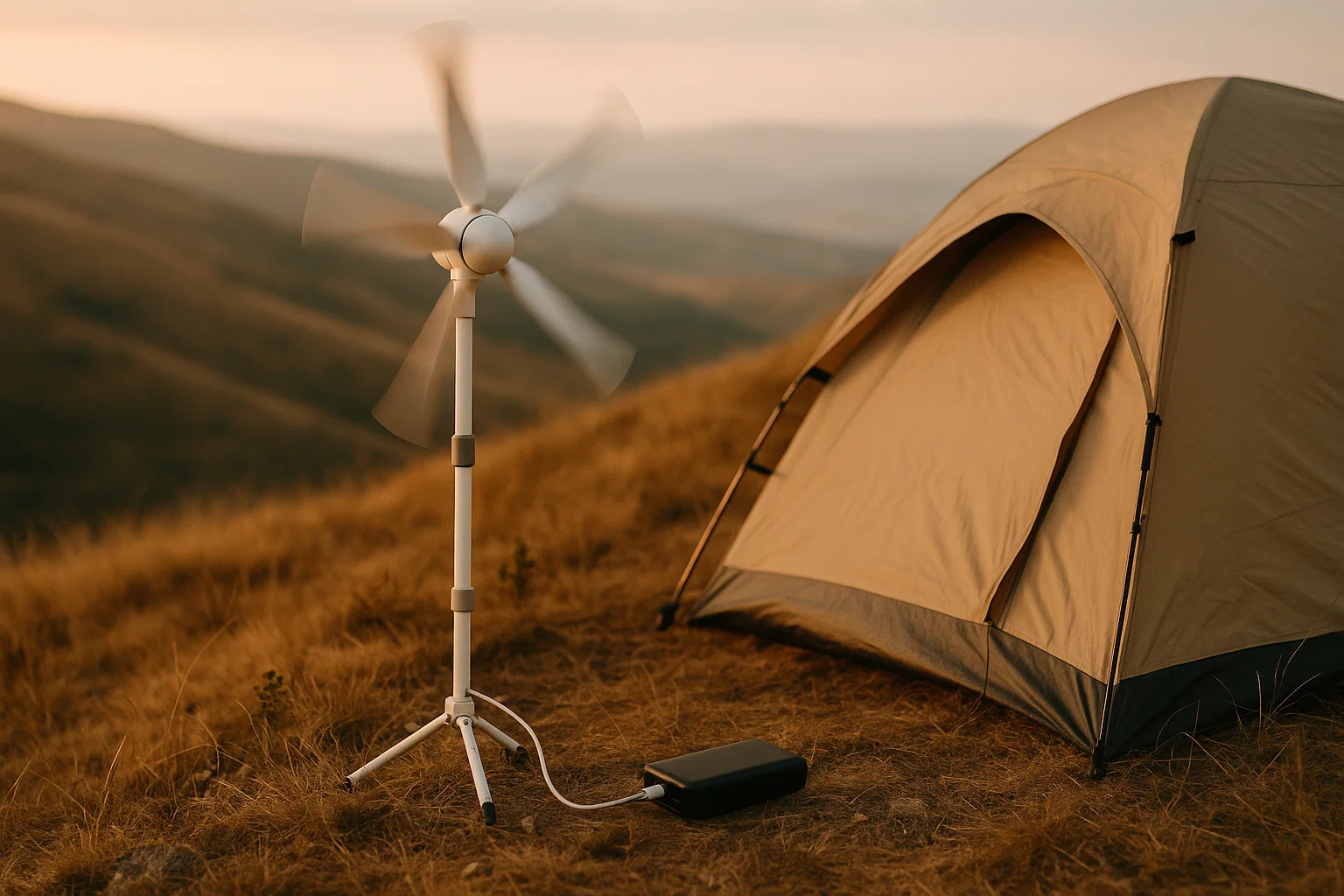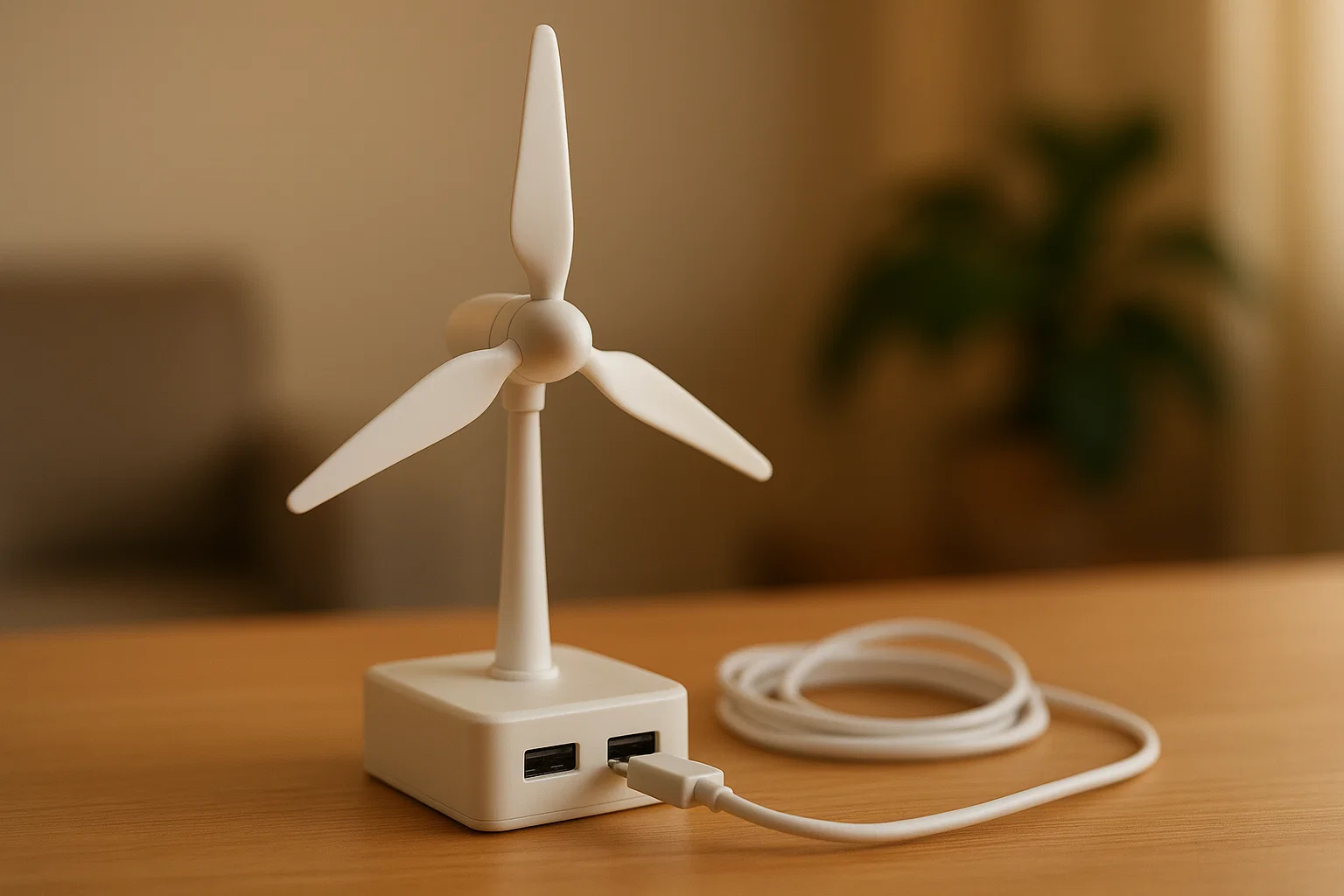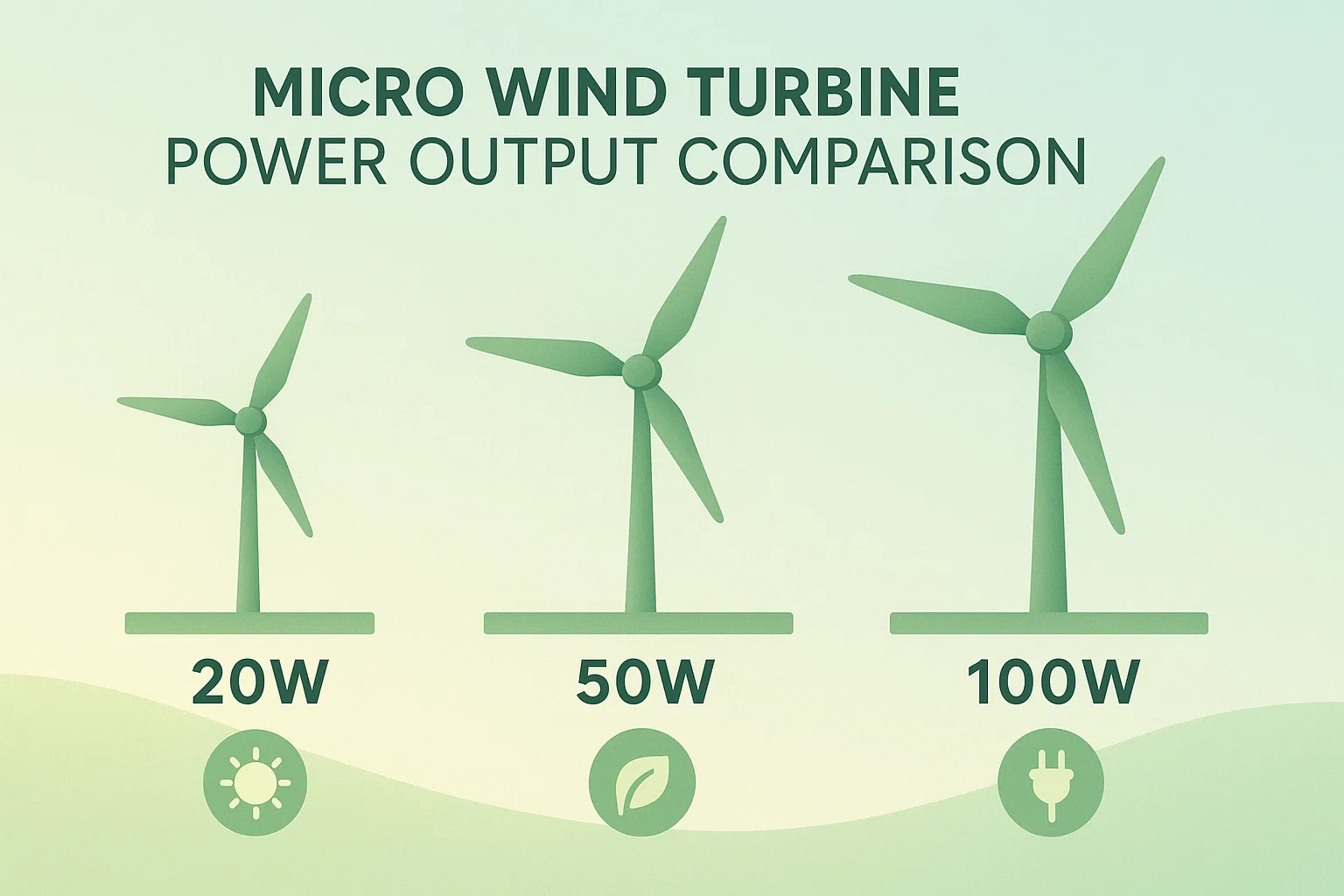 There’s something oddly calming about the sound of a light breeze running across a hillside. If you’ve ever camped in a place where the wind moves with a steady rhythm, you’ve probably wondered whether all that motion could be put to work. People carry power banks, folding solar panels, even hand-crank chargers. But using the wind especially with a device small enough to fit in your backpack feels like you’re borrowing energy straight from nature without asking too much from it.
There’s something oddly calming about the sound of a light breeze running across a hillside. If you’ve ever camped in a place where the wind moves with a steady rhythm, you’ve probably wondered whether all that motion could be put to work. People carry power banks, folding solar panels, even hand-crank chargers. But using the wind especially with a device small enough to fit in your backpack feels like you’re borrowing energy straight from nature without asking too much from it.
That’s where micro-wind portable turbines come in. These little devices promise a kind of quiet independence: power that appears slowly but steadily, whether you’re camping, living off-grid, or just trying to reduce your dependence on the socket in your wall. Some people treat them like emergency tools, others as long-term companions for slow, patient charging.
And honestly, they’re fascinating in a simple, earthy way. They don’t roar, they don’t glow, they don’t demand attention like high-powered gear. They just spin when the wind feels generous. Let’s walk through what they can actually do, what they can’t, and where these small turbines make the most sense in real life.
You’ll see the main keyword, micro-wind portable turbines, appear naturally along the way but the real goal here is clarity, honesty, and practical value.
Why These Little Turbines Exist in the First Place
A lot of people imagine wind turbines only in the form of giant white towers planted across open fields. Those towering blades dominate the landscape and collect headlines. But far below that scale is a growing field of tiny turbines engineered for personal use. They’re part of a quiet shift in how people think about energy.
More folks are traveling, camping, or working away from traditional infrastructure. Some want a backup power source during outages. Others just want the comfort of knowing they can produce electricity without fuel, noise, or sunlight.
A researcher from a 2025 Nature Energy review once put it like this: “Micro turbines shine when the wind stays consistent, even if it’s not strong.” It’s a simple thought, but it captures the whole point of these devices. They’re not about instant power; they’re about slow, reliable trickle charging.
Imagine sitting outside at night while your solar panel sleeps. A tiny turbine next to your tent keeps turning even when everything else stops. There’s something comforting about that, especially if you’ve ever needed to charge a GPS, phone, or emergency radio when the sun was long gone.
The simplicity of the design blades, shaft, generator, USB output hides how surprisingly helpful they can be when your needs are modest.
The Real Question People Ask: Are Micro Wind Turbines Worth It?
The short answer is: it depends on your wind conditions and your expectations.
The longer answer is a story that almost everyone who buys one learns sooner or later.
A lot of manufacturers print numbers like “100W” or “200W” on their product pages. And technically, under perfect lab conditions strong, stable wind of around 25–35 mph those numbers are achievable.
But out in the real world, it rarely works like that.
The U.S. Department of Energy published a 2025 distributed wind report showing that:
• Micro turbines under 500W usually deliver 10–60W in natural outdoor wind
• Output swings dramatically with gusts, direction changes, and turbulence
• Consistent airflow matters more than raw wind speed
That’s the part many buyers discover too late. These devices work beautifully, but not explosively. They’re not designed to power refrigerators or heaters. They live in the slow lane quietly producing enough electricity to keep small devices alive over time.
Still, “worth it” isn’t just about wattage. It’s about context.
They’re absolutely worth it if you:
• Camp in open, breezy places
• Travel for days without reliable sunlight
• Enjoy off-grid living
• Want emergency charging backup
• Appreciate slow, steady, eco-friendly power
They’re not ideal if you:
• Expect them to power your whole house
• Plan to run heavy appliances
• Live in a windless, tree-protected area
• Only want fast charging
There’s no shame in needing faster power. Sometimes, a power bank or lightweight solar panel is the better companion. But in their own quiet lane, micro-wind portable turbines do what they promise and they do it honestly, without fuss.
How Much Micro Wind Turbines Actually Cost Today
As green technology spreads, prices have come down. The most common models fall into three groups.
1. Small (10W–30W) $60 to $120 USD
These are the pocket-friendly options made for hikers and weekend campers.
Good for:
• LED lights
• Phones charged slowly
• GPS devices
• Radios
Not good for:
• Power-hungry gadgets
2. Mid-Range (50W–100W) $150 to $260 USD
These are the most popular size. They balance cost and performance for real outdoor use.
Good for:
• Charging power banks reliably
• Keeping small electronics alive on multi-day trips
• Overnight wind harvesting
3. High-End (150W–400W) $300 to $700 USD
These border between portable and semi-permanent.
Good for:
• RV users
• Off-grid huts or cabins
• Rural backup power
This is where some homeowners start asking whether they can power their house. And that brings us to one of the most common questions floating around the internet.

Can a Micro Wind Turbine Power a House?
You might have seen videos of people attaching small turbines to poles or rooftops and claiming amazing results. They look impressive, and people want to believe the dream wind energy from your yard, small, cheap, simple.
But let’s be honest.
A house consumes hundreds of times more energy than a portable turbine can realistically produce. Even the best portable models aren’t built to run:
• Refrigerators
• Heating systems
• Air conditioners
• Washing machines
• Electric stoves
A typical home uses between 20–40 kilowatt-hours per day. Meanwhile, the average portable turbine might produce 0.05–0.4 kilowatt-hours per day depending on wind.
Those numbers aren’t compatible.
But here’s what a micro turbine can do for a house:
• Charge smartphones during outages
• Keep LED bulbs running
• Recharge a power bank
• Support low-power IoT devices
• Assist in off-grid sheds or tiny homes
• Reduce strain on small solar systems
So no, micro turbines won’t replace your electricity bill. But they play a small, meaningful role in making your home a little more resilient.
What Is the Best Micro Wind Turbine?
“Best” is a shifting word in sustainable tech because needs vary so widely. A turbine that’s magical for a mountaintop camper might feel useless for someone living in a leafy neighborhood.
Still, based on testing and user reviews across DOE reports, TechRadar’s 2025 green tech evaluations, and overlanding communities, the strongest options tend to share the same traits:
• Lightweight (under 2–3 kg)
• Starts spinning at low wind speeds (under 3 m/s)
• Stable blade design
• Quiet rotation
• Efficient trickle charging
• USB-C or direct DC output
• Easy assembly
Manufacturers frequently mentioned by enthusiasts include:
• Windcatcher Portable Series
• AeroPack Micro 50W
• BlueHorizons MiniWind 100
• TurbinaGo Traveler 30W
• NemoWind UltraLite 20W
These names shift year by year, but the engineering principles remain steady.
As one hiker joked, “The best turbine is the one that doesn’t make you swear while setting it up.” That’s truer than it sounds.

Where Micro Turbines Make the Most Sense in Real Life
1. Camping in Windy Regions
A breezy coast or hillside can turn a simple trip into a self-powered getaway. At night, when everything else powers down, the turbine keeps working.
2. Overlanding and Long Travel
Solar is great, but shade and weather often ruin the plan. Wind fills those gaps.
3. Emergency Preparedness
Storms, outages, and unpredictable power events remind us how valuable small backup systems are.
4. Remote Workstations
Field researchers, photographers, and environmental workers often bring turbines to charge sensors or equipment.
5. Rural Homes and Cabins
These turbines work beautifully alongside solar, providing complementary energy at night or during cloudy stretches.
There’s a quiet dignity in producing your own electricity even if it’s only a little.
How These Turbines Actually Work (Without the Engineering Lecture)
A turbine doesn’t need much to make electricity. Air pushes the blades, the blades turn a tiny rotor, and that motion becomes voltage that flows through a regulator before reaching your device.
But the magic is in the small touches:
• Blade shape decides how early the turbine starts spinning
• Lightweight materials keep momentum even at low wind
• Smart voltage controllers prevent damage to phones
• USB-C ports offer universal compatibility
• Foldable or detachable blades make travel easy
A professor once described turbines as “wind sculptures that happen to make electricity.” It’s a poetic way of saying they’re simple machines living in harmony with the elements.
When they’re designed well, you can almost feel the engineering kindness behind them.
Understanding Real-World Performance (Not the Box Rating)
This part matters more than anything else.
The watt number printed on the turbine is almost always the peak rating, not the average.
A 100W portable turbine might only produce:
• 20–40W in normal breezes
• 5–10W in light wind
• 0W when surrounded by trees, walls, or tents
Wind behaves differently in valleys, forests, and campsites than on an open field.
A Canadian field test in 2025 found that:
• Consistent 18–25 mph winds produced stable charging
• Turbulent wind cut performance by up to 60%
• Open spaces outperformed wooded campsites 4 to 1
The moral here?
Don’t judge a turbine by its packaging. Judge it by your environment.
Common Situations Where People Overestimate Wind
It’s natural. Everyone thinks their area is “windy.” But wind at ground level where portable turbines operate is slower and more erratic than the wind you feel on your face.
Some spots almost never work well:
• Sheltered gardens
• Dense forest camps
• Behind buildings
• Low valleys
• Near tall tents or vans
It’s not that the turbine is bad it’s that the wind is stubborn.
Still, a surprising number of people discover that once they lift the turbine slightly above ground or move it a few meters away from obstacles, performance improves dramatically.
A small change in placement can feel like a revelation.
Portable Turbines vs. Portable Solar: Which One Wins?
It’s tempting to treat this as a technology battle, but it isn’t.
Both have strengths, and the smart choice is often both together.
Solar Excels When
• The sky is clear
• You stay in one location for hours
• You need predictable charging
• You want fast power delivery
Wind Excels When
• The sun disappears
• You charge devices overnight
• You camp in windy terrain
• You want 24-hour harvesting
Solar is strong and reliable until clouds or darkness interrupt it.
Wind is unpredictable until a good breeze turns it into a faithful partner.
Together, they feel like a balanced relationship.
Who Actually Manufactures These Turbines?
Most micro-wind portable turbines come from specialized outdoor-energy companies rather than giant tech brands.
Common manufacturers include:
• Windcatcher Energy Systems
• BlueHorizons EcoTech
• AeroEdge Mobility Power
• NorthPeak Compact Wind Division
• EcoAero Portable Power
Smaller workshops and independent green-tech startups also enter the market each year. Many hikers swear by artisan-built models designed in small batches lightweight, durable, and tuned with obsessive care.
If you ever buy one of those handmade models, you can almost feel someone’s fingerprints on the engineering decisions.
What These Turbines Actually Feel Like to Use
This part rarely gets mentioned in technical articles, but it matters.
You hear a low “whish-whish” sound as the blades catch the wind. If you set one near your tent, it becomes a companion. Not loud enough to interrupt sleep, but present enough to remind you nature is lending a hand.
If you’re the kind of person who likes the hum of rain on the roof or the sound of leaves brushing each other in the evening, you’ll probably enjoy having a turbine running quietly beside you.
There’s a small satisfaction in seeing the LED indicator light up as energy flows in. Not excitement more like reassurance.
It feels like nature is saying, “I’ve got you.”
Who Should Actually Buy a Micro Wind Turbine?
After years of data, field reports, and user reviews, the list is pretty clear.
Great for:
• Campers in open, windy spaces
• Travelers who move through changing weather
• Overlanding rigs
• Cyclists on long tours
• Emergency kits
• Small off-grid studios
• Researchers and field workers
Not ideal for:
• Urban apartments
• Low-wind regions
• Fast-charging expectations
If you treat a turbine like a slow, steady helper rather than a miracle machine, you’ll love it.
Final Thoughts on Micro Wind Portable Turbines
If you’ve read this far, you probably care about independence, sustainability, and the gentle idea that energy doesn’t always have to roar into your devices. Sometimes it can drift in, quietly, carried by the wind.
Micro-wind portable turbines won’t replace your power grid. They won’t run your home. They won’t turn a storm into a luxury suite.
But they will offer something far more honest: a way to keep your devices alive when the world goes dark, a way to travel lightly, and a way to feel connected to the environment without leaving a heavy footprint.
And maybe that’s enough.
Maybe that’s the kind of energy shift we need small, steady, human.